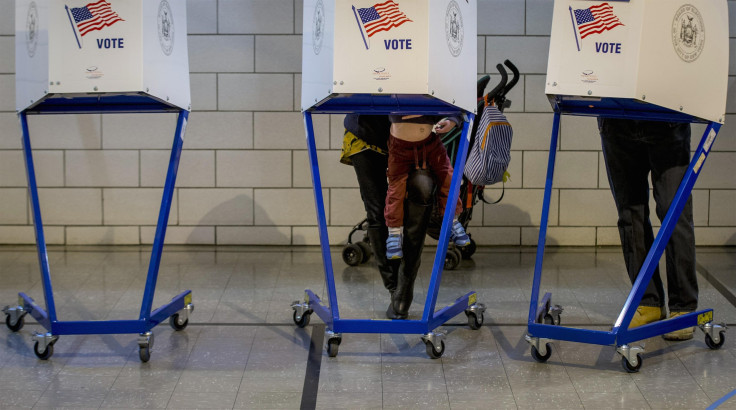High Voter Turnout Drove GOP Wins In Key Senate Midterm Races

High voter turnout helped the GOP win key U.S. Senate races across the nation in Tuesday's midterm elections, according to unofficial results obtained from state election officials. Five of the seven states that saw Senate seats go from Democrats to Republicans drew more than 50 percent of registered voters Tuesday, while nationwide only 36.6 percent of registered voters cast ballots.
The stereotypical storyline of midterm elections is that they are plagued by voter apathy and that higher turnout tends to favor Democrats. But in Arkansas, Colorado, Iowa, Montana and South Dakota -- which reported turnout rates of 49.6 percent, 52.2 percent, 52.3 percent, 54.6 percent and 54.2 percent, respectively -- Republicans surged to victory as large numbers of voters headed to the polls. North Carolina and West Virginia, the two remaining states that saw Senate seats flip from blue to red Tuesday, also bested the national average, though by smaller margins, with 44.0 percent and about 37 percent turnout.
The data on these seven key races paints a picture of an electorate that headed to the polls in droves, outpacing recent midterm turnout and even breaking turnout records in a number of the states. For instance, North Carolina fell short of its recent turnout record of 62 percent in 1990. But with 2,915,757 ballots cast, it beat its previous record for the number of voters in a midterm, 2.7 million in 2010, according to the Associated Press.
“We are pleased that more than 2.7 million voters made such a strong statement for the democratic process —increasing early participation by over 20 percent and besting the state’s prior midterm record,” North Carolina State Board of Elections Executive Director Kim Strach said in a statement Tuesday night before the final tally was counted.
Not all of the swing states saw high turnout. West Virginia bucked the trend with 37 percent of voters heading to the polls Tuesday, the state's lowest turnout in a general election since 1950, West Virginia Metro News reported. Still, every county in West Virginia went for the GOP Tuesday.
Information about voter race, gender, age and other demographics for all seven races was either not released to the public or will not be available for at least two weeks, state election officials said Tuesday. But exit polls showed Democrats were able to win the women's vote by 7 percent – a big jump from 2010 when Republicans garnered 1 percent more of the female vote than Democrats. This year, Republicans won the male vote by 13 percent points, just 1 percentage point behind their haul in the 2010 “shellacking” that gave them control of the U.S. House of Representatives, according to the Wall Street Journal.
The GOP held its sway over white voters this year, earning 59 percent of white votes while Democrats won 39 percent, a huge advantage in this year’s elections, in which three-quarters of the electorate was white, the Journal noted.
Hispanics, long considered a key voting bloc for the future electoral prospects of the GOP, broke hard for Democrats once again this year. In 2010, Democrats won the Latino vote by a 22 percent margin. They increased that advantage to 30 percent this year, winning 64 percent of Hispanics, versus the GOP’s 34 percent, the poll showed.
Republican pollster Bill McInturff, who oversaw the Wall Street Journal/NBC News midterm poll, told the Journal that this year’s big gains by Republicans will not necessarily foreshadow a victory in the 2016 presidential election. “[Republicans] got smoked with Latinos. So there is a screaming yellow caution sign flashing,” he said. At the same time, he said, Democrats “have to do much better” with white voters.
© Copyright IBTimes 2025. All rights reserved.





















